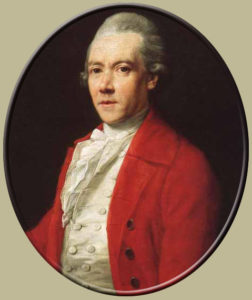Philip Livingston was a Merchant in New York, New York and a delegate to the Continental Congress. He was also among the fifty-six founding fathers to sign the Declaration of Independence.

Philip Livingston, signer of the Declaration of Independence
Public domain image.
Philip Livingston was born on January 15, 1716 in Albany, New York. Lord Livingston, Philip’s father, was the Lord of a large manner. Even though his father was rich, Philip was the fourth son and thus had no inheritance.
When Philip was of age, he was educated at Yale. He graduated in 1737, when he was 21. After he finished college, he chose to settle down in New York, New York. There he decided to try out a career as a merchant. This career was definitely a good fit for young Philip; he excelled at it and it became very profitable for him.
In 1754, he was sent as a delegate to the Albany Congress. At this congress, he and the other congressman were finding ways to negotiate with the Indians over land, this was directly on the brink of the French and Indian War. At this congress, the delegates wrote out a plan to unite the colonies completely; however when it was sent to King George III he rejected the idea. Some sources say the King feared the colonies revolting if they were united. Clearly, this plan worked out for King George in the end.
In 1759, Livingston was elected to the New York Provincial Assembly. He also became active in preparations for war: rounding up soldiers, helping find ammunition and supplies, etc.
In 1765, he was elected to the Congress. This congress came out with the first formal stand against the cruelties of the Britain. This congress is where Philip’s passion for Independence was lit on fire. He became extremely dedicated to freedom from the beginning.
From there he became a member of the New York Committee of Correspondence, New York Committee of Sixty, and in 1775 was elected President of the New York Provincial Congress. Later that year, he was sent as a delegate to the Continental Congress. In 1776, Philip Livingston signed his name on the Declaration of Independence.
In 1777, he was sent to the New York State Senate. On June 12, 1778 he suddenly dropped dead during a congressional session. He died of unknown causes.


